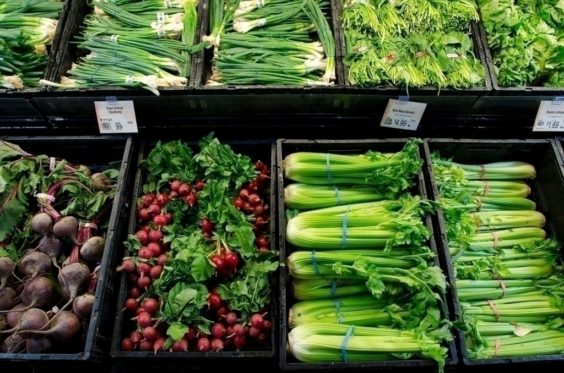
Building on the popular lament that “there are never coupons for healthy food”, several studies have suggested that offering more coupons for healthier food will make us eat healthier. Now, a new study pins much of the blame for our expanding waistlines, on supermarket circulars.
“Circulars have the potential to have a positive influence on an individual’s diet quality,” a team of researchers contends, in their study published in the most recent edition of Nutrition Journal. Conversely, they say, what supermarkets choose to advertise can negatively influence what we choose to buy.
The team studied a year’s worth of circulars at an unnamed Midwestern grocery chain. Counting and categorizing a total of 9,209 food items, they found that the selection fell far short of federal dietary guidelines. “The average American diet, including underconsumption of fruits and vegetables but overconsumption of protein foods, was reflected in the relative frequency of food groups advertised in weekly sales circulars,” the team writes.
Although the official Dietary Guidelines for Americans recommend that 50% of your daily food intake be in the form of fruits and vegetables, only 15% of the advertised food items studied were for produce. And less than 3% were for dark green and red & orange vegetables.
The most frequently advertised food category was proteins (mainly meat and poultry) at 25%, which is above the 20% recommended daily amount. That was followed by grains at 18% (well below the 30% recommendation). Significantly, 16% of foods advertised were categorized as “empty calories”, which, of course, dietary guidelines don’t recommend at all.
Though many advocate meal planning as a way to save money, by doing your weekly shopping based on store specials and what you have coupons for, few would suggest buying only what’s advertised in your store’s weekly circular. They’re promotional vehicles, after all, not suggestions on how to eat healthy.
But the researchers argue that “consumers indicate that weekly sales circulars are main factors in food purchasing decisions; thus, modification of the items advertised has the potential to significantly support people’s efforts to eat healthier.”
It’s a similar argument other health researchers have made, when it comes to coupons. Two separate studies published last year suggested that offering coupons for healthier food would encourage us to eat healthier. And a study published earlier this year said that even stores’ digital coupons were lacking, with one-quarter of them promoting empty-calorie choices like processed snack foods, candies and desserts.
Of course, that’s largely because the food items most heavily promoted in circulars and with coupons are made by major food manufacturers, which churn out the processed foods that these researchers decry. Farmers who provide produce to stores, for example, are unlikely to offer promotions and coupons the way cereal and snack makers do.
Ultimately, though, the authors of the Nutrition Journal study argue that it would take only “minor and inexpensive changes in content and placement of advertised items in circulars” to make a big difference. By increasing the focus on promoting fruits and vegetables, stores could realize higher profits from both increased sales and lower waste – the more they sell, after all, the less unsold food they’ll have to throw away. Doing so would have “great potential to influence purchasing behavior and dietary intake to more closely align with recommendations,” the authors conclude.
So think about that, the next time your store advertises an irresistible buy-one-get-one-free deal on cookies that you can combine with coupons to get them for free. They may cost less than the full-price spinach and carrots – but when it comes to your health, they could end up costing you more in the long run.















